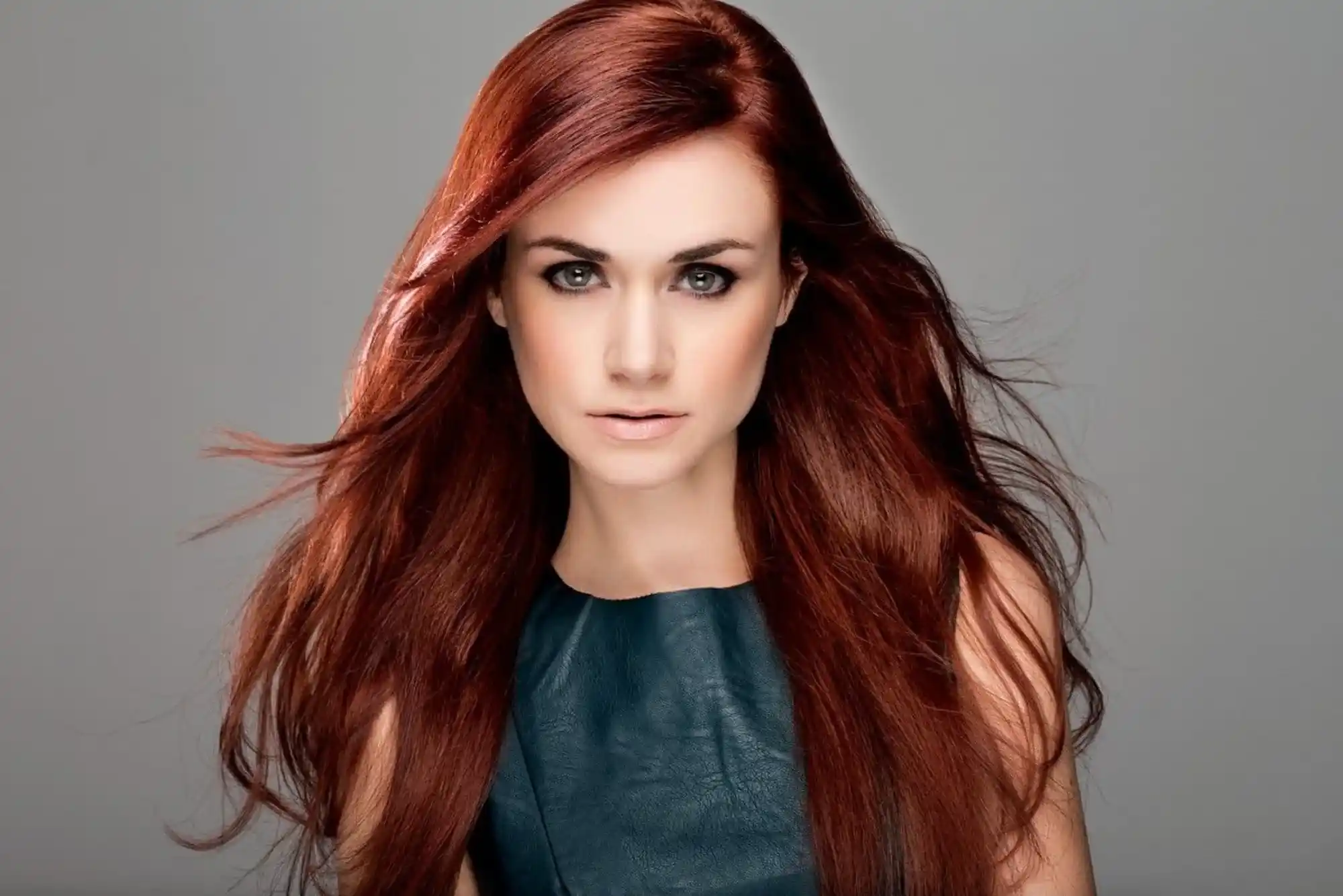When it comes to hair color, the choice is often personal, influenced by trends, personal style, or even a desire to make a statement. One question that arises frequently, particularly for those considering a switch to red, is whether red hair makes you look paler. This inquiry is essential for individuals who wish to enhance their natural beauty and ensure that their hair color complements their skin tone. In this article, we will delve into the relationship between red hair and complexion, exploring factors such as skin undertones, hair shades, and makeup techniques that can help balance your look.
The Science of Color and Complexion
To understand the relationship between red hair and complexion, it’s important to first examine the basics of color theory and how different colors can affect our perception of appearance. Colors are often categorized into two groups: warm and cool.
Warm colors include reds, oranges, and yellows.
Cool colors encompass blues, greens, and purples.
Skin tones can also be classified into warm, cool, and neutral categories, which play a crucial role in determining how certain hair colors, like red, interact with an individual’s complexion.
Understanding Skin Undertones
Warm Undertones: If you have warm undertones, your skin may have hints of yellow, peach, or golden shades. Typically, people with warm undertones tan easily and may have greenish veins.
Cool Undertones: Cool undertones are characterized by pink, red, or blue hues. Those with cool undertones often burn more than tan and have blue or purple veins.
Neutral Undertones: Neutral undertones are a mix of both warm and cool tones, allowing for flexibility when choosing hair colors.
When choosing a red hair color, understanding your skin undertone can significantly impact how your hair color interacts with your complexion.
The Effect of Red Hair on Complexion
The Illusion of Paleness
Many people believe that adopting a red hair color can create an illusion of paleness. This perception often arises from the vibrant and striking nature of red hair, especially in brighter shades like copper or fiery red.
Contrast with Skin Tone: Red hair can create a stark contrast with lighter skin tones, which may lead to a perception of increased paleness. The vibrancy of red may draw attention away from other aspects of the face, highlighting the skin’s hue instead.
The Role of Hair Shades
Red hair comes in a wide range of shades, from auburn and ginger to bright copper and deep burgundy. Each shade interacts differently with various skin tones.
Bright Red Shades: Bright red shades tend to enhance the paleness of those with lighter skin tones. This can be flattering for individuals with cool undertones but may wash out those with warm undertones.
Auburn and Darker Reds: Darker shades of red, such as auburn, can create a more balanced look, complementing warm undertones without creating a washed-out effect. These shades can add warmth to the complexion and create a natural glow.
Copper Tones: Copper shades often work well with warm undertones, as they can enhance the skin’s natural warmth and create a radiant look without making the skin appear paler.
Balancing Red Hair with Makeup

If you find that red hair does make you look paler than desired, there are various makeup techniques you can employ to achieve a balanced look. Here are some effective strategies:
Foundation and Concealer
Using the right foundation and concealer can significantly impact your overall appearance.
Choose the Right Shade: Ensure that your foundation matches your skin tone perfectly. If you have warm undertones, look for foundations with golden or peachy bases. For cool undertones, opt for foundations with pink or neutral bases.
Highlighting and Contouring: Use highlighters and bronzers to create depth and dimension in your face. A warm bronzer can add color to your cheeks, preventing the washed-out effect that red hair may cause.
Blush Choices
Blush can be an excellent tool to add warmth to your complexion.
Warm Blush Tones: Choose blush colors that complement your hair and skin tone. Warm tones like peach, coral, and soft apricot can enhance the overall look and prevent a pale appearance.
Avoiding Cool Tones: Cool-toned blushes can sometimes clash with red hair, making the complexion look more washed out.
Eye Makeup
Eye makeup is another crucial element in balancing your overall look.
Bold Eyes: If red hair makes your skin appear paler, consider using bold eye makeup to draw attention away from your complexion. Dark eyeliner and dramatic eyeshadow can create a striking contrast.
Neutral Tones: Alternatively, neutral eye makeup can complement red hair beautifully. Soft browns, taupes, and warm golds can enhance your features without overpowering your look.
Fashion Choices for Redheads
Choosing the right wardrobe can also influence how your hair color affects your complexion. Here are some style tips to consider:
Color Coordination
Avoiding Pale Colors: Wearing pale or muted colors may exacerbate the appearance of paleness associated with red hair. Instead, opt for richer, bolder colors that harmonize with your hair.
Warm Tones: Warm colors like mustard, burnt orange, and olive green can complement red hair and enhance your overall glow.
Accessorizing
Accessories can play a significant role in balancing your appearance.
Jewelry Choices: Gold jewelry tends to pair beautifully with red hair, enhancing warmth and preventing a pale look. Avoid silver, which may clash with warmer tones.
Scarves and Hats: Wearing scarves or hats in vibrant colors can also draw attention away from the face, providing a pop of color that enhances your overall look.
Cultural and Social Perceptions of Red Hair
Red hair has historically been associated with various cultural and social perceptions. In some cultures, it is considered a mark of beauty and uniqueness, while in others, it has been linked to stereotypes.
The Appeal of Red Hair
Many individuals are drawn to red hair because of its rarity and vibrancy.
Unique Identity: Red hair can set a person apart, fostering a sense of individuality. This uniqueness often boosts confidence and can change how one perceives their own beauty.
Stereotypes and Misconceptions
On the other hand, redheads may face stereotypes that affect how their appearance is perceived.
Paleness Association: Some cultures perpetuate the belief that redheads are pale and sickly, which may not be true for everyone. This stereotype can influence self-image and societal perceptions.
In conclusion, the question of whether red hair makes you look paler is not straightforward. It largely depends on factors such as skin undertones, hair shades, and personal styling choices. While vibrant shades of red can create a striking contrast with lighter skin tones, leading to a perception of increased paleness, there are ways to balance this effect through makeup and wardrobe choices. By understanding the science of color and making informed decisions about your hair and makeup, you can embrace your red hair while feeling confident and beautiful.







